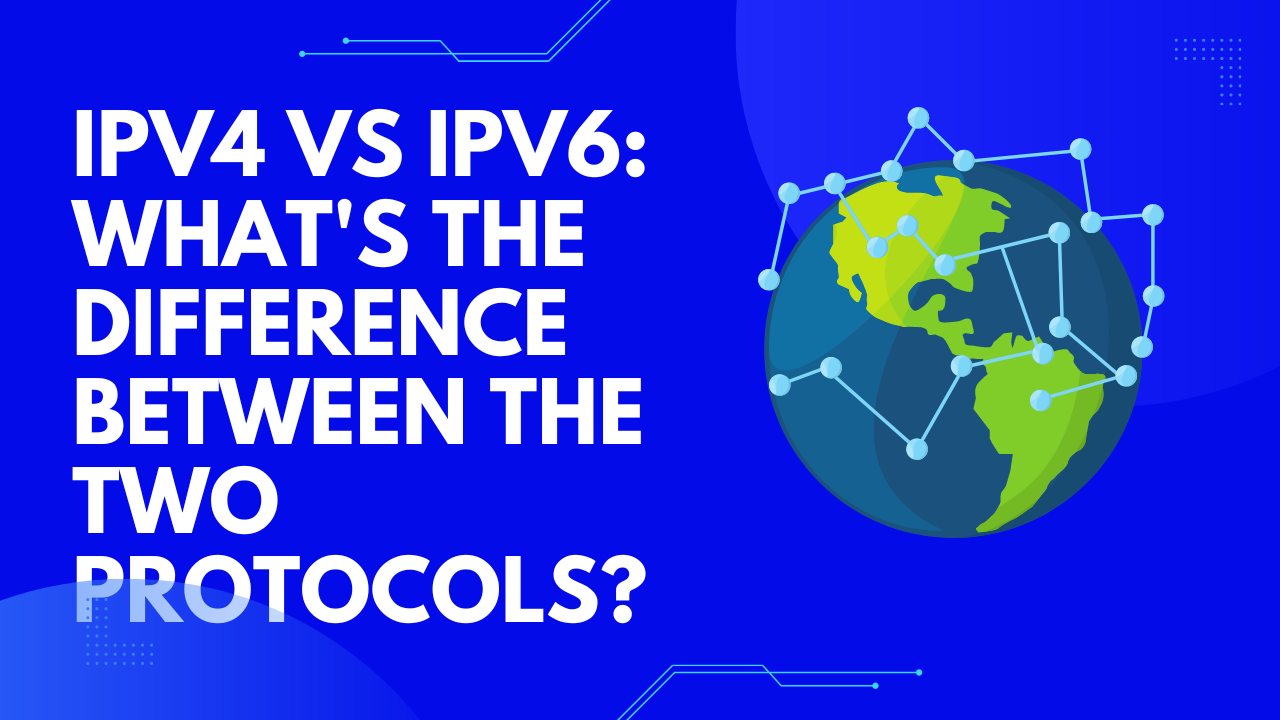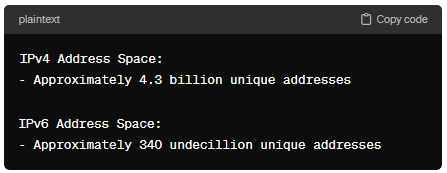
In the vast landscape of the internet, communication between devices is facilitated by protocols known as Internet Protocol (IP). Among these protocols, two major versions stand out: IPv4 (Internet Protocol version 4) and IPv6 (Internet Protocol version 6). While both serve the fundamental purpose of identifying and communicating with devices on a network, they exhibit significant differences that shape the way data is transmitted across the internet. Let’s delve into the distinctions between IPv4 and IPv6 to gain a deeper understanding of these essential components of the internet infrastructure.
Address Length:

One of the most apparent differences between IPv4 and IPv6 lies in their address lengths. IPv4 addresses consist of 32 bits, represented in a dotted-decimal format such as “192.168.0.1.” In contrast, IPv6 addresses are 128 bits long and are expressed in hexadecimal format with colons, such as “2001:0db8:85a3:0000:0000:8a2e:0370:7334.” The longer address length of IPv6 allows for a significantly larger pool of unique addresses compared to IPv4.
Address Space:

The limited address space of IPv4 is a well-known constraint that has spurred the transition to IPv6. With its 32-bit address length, IPv4 supports approximately 4.3 billion unique addresses. While this may have seemed ample in the early days of the internet, the exponential growth in internet-connected devices has quickly depleted the available IPv4 addresses. Conversely, IPv6 offers a substantially larger address space, with approximately 340 undecillion (3.4 × 10^38) unique addresses. This abundance of addresses ensures that every device can be uniquely identified on the internet, facilitating the continued expansion of the interconnected world.
Efficiency and Security:
IPv6 was designed not only to address the exhaustion of IPv4 addresses but also to improve the efficiency and security of internet communication. IPv6 incorporates features such as built-in support for IPsec (Internet Protocol Security), which enhances the security of data transmitted over the internet. Additionally, IPv6 reduces the overhead associated with packet processing by simplifying the header structure, resulting in more efficient routing and forwarding of data packets.
Transition Challenges:
Despite the clear advantages offered by IPv6, the transition from IPv4 to IPv6 poses significant challenges. Compatibility issues between IPv4 and IPv6 networks necessitate transitional mechanisms to ensure seamless communication between devices using different protocols. Moreover, the widespread adoption of IPv6 requires cooperation and coordination among internet service providers, network operators, and device manufacturers.
Conclusion:
In conclusion, IPv4 and IPv6 represent two distinct generations of internet protocols, each with its own set of advantages and limitations. While IPv4 continues to serve as the predominant protocol for internet communication, the depletion of IPv4 addresses has underscored the necessity of transitioning to IPv6. With its larger address space, enhanced efficiency, and built-in security features, IPv6 offers a robust solution to address the evolving needs of the internet ecosystem. As the internet continues to evolve and expand, understanding the differences between IPv4 and IPv6 is essential for navigating the intricacies of modern network infrastructure.
Through this exploration, we’ve gained insight into the foundational elements that underpin the internet’s functionality, highlighting the importance of ongoing innovation and adaptation to meet the ever-changing demands of the digital age.
IPv4 vs IPv6: What’s The Difference (F.A.Q)
Why is there a need for IPv6 if IPv4 already exists?
IPv4 was created at a time when the internet was in its infancy, and the number of connected devices was relatively small. However, as the internet expanded exponentially, the limited address space of IPv4 (4.3 billion addresses) became insufficient to accommodate the growing number of devices. IPv6 was developed to provide a larger address space (approximately 340 undecillion addresses) to ensure the continued growth of the internet and address the exhaustion of IPv4 addresses.
Will IPv6 completely replace IPv4?
While IPv6 was designed to eventually replace IPv4, the transition process is gradual and complex. IPv4 and IPv6 will coexist for the foreseeable future, with both protocols running in parallel. Many networks already support both IPv4 and IPv6, allowing devices using either protocol to communicate with each other. However, as the demand for IPv4 addresses continues to outstrip supply, the adoption of IPv6 will become increasingly prevalent.
How does IPv6 improve security compared to IPv4?
IPv6 incorporates several security features, including built-in support for IPsec (Internet Protocol Security). IPsec provides authentication, encryption, and integrity protection for IPv6 packets, enhancing the security of data transmitted over the internet. Additionally, IPv6 simplifies the header structure, reducing the opportunities for certain types of attacks, such as header manipulation and fragmentation-based attacks.




